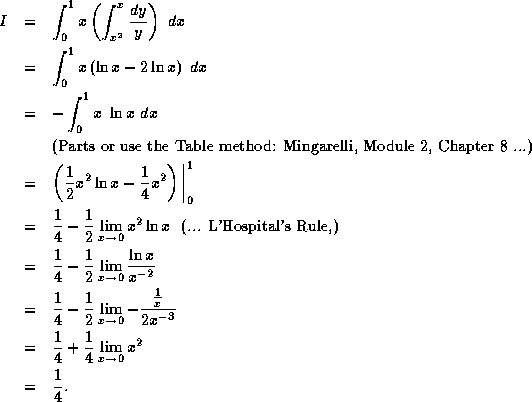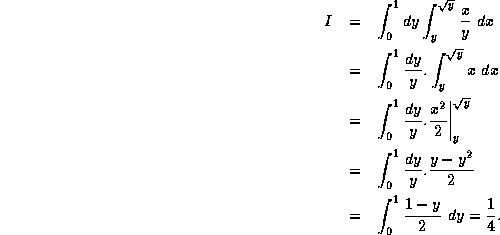Reason: Using ![]() , we have
, we have

![]()
where
![]() is the disk of radius R centered at the origin:
is the disk of radius R centered at the origin: ![]() ,
is equal to (d)
,
is equal to (d) ![]() .
.
Reason: In polar coordinates, the integrand is
![]()
Hence the double integral is
![]()
(b) ![]() .
.
Reason: The description of D using vertical slices is given by
![]()
In this case, the integral looks like
![]()
which, when evaluated, gives

On the other hand, if we use horizontal slices then D can be described by the set
![]()
In this case, the integral looks like
![]()
which, when evaluated, gives

So you can see that, in this case, horizontal slices were easier !? It's hard to tell sometimes...
Reason: Let D be the circular region in the xy-plane
given by ![]() . Then the required volume is given by the double
integral
. Then the required volume is given by the double
integral ![]() , since the function
, since the function ![]() for
for ![]() . We use polar coordinates to compute this
double integral. Setting
. We use polar coordinates to compute this
double integral. Setting ![]() and
and
![]()
we have:
